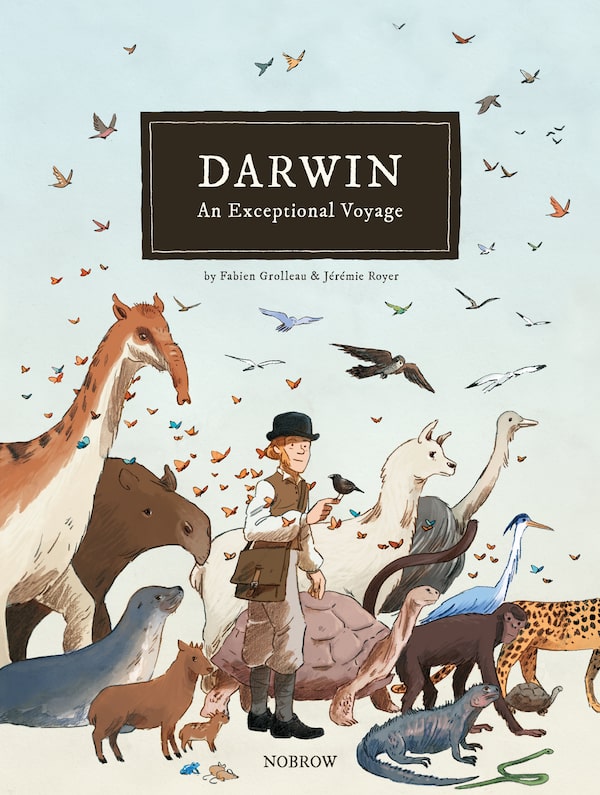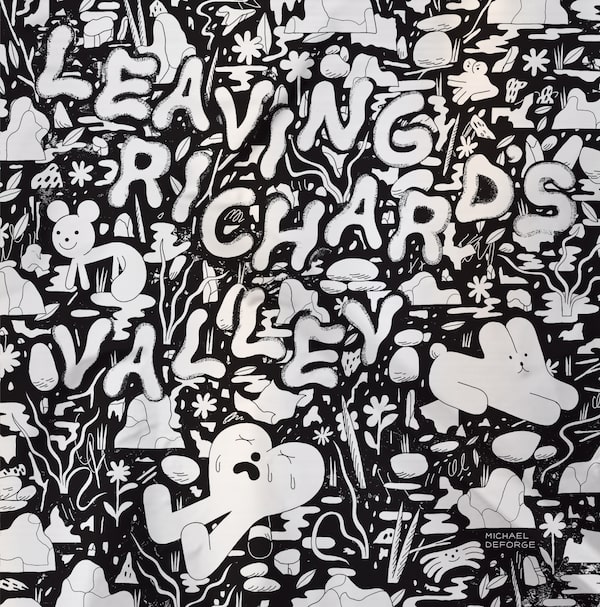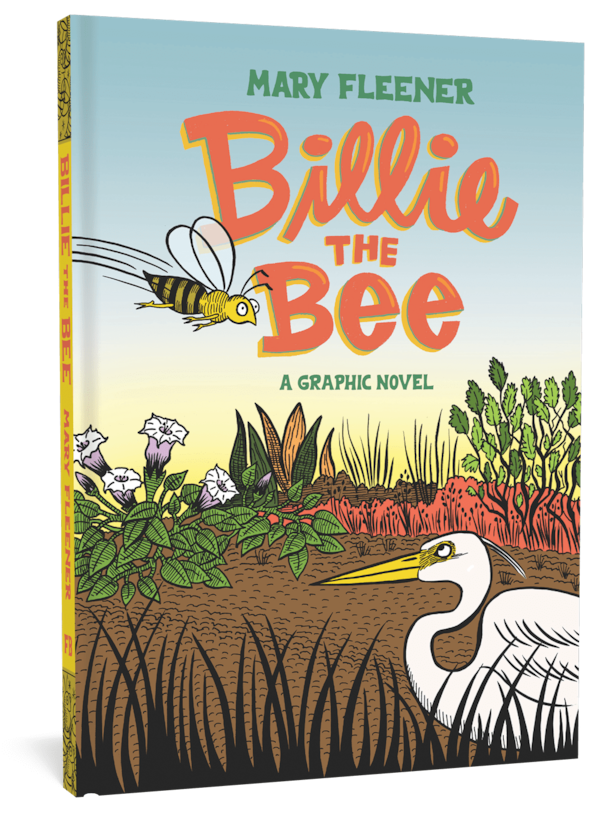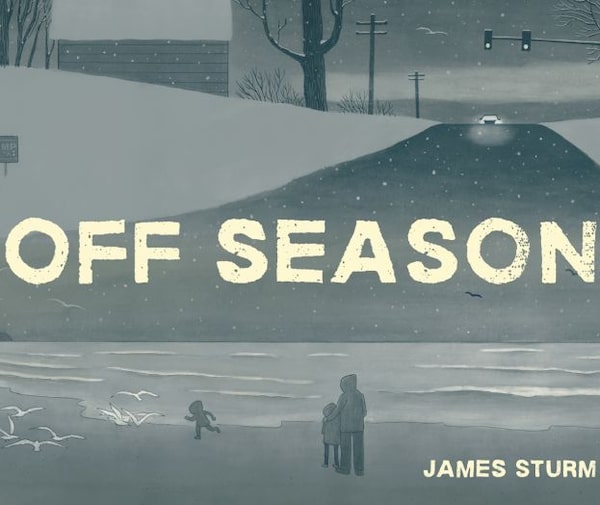Darwin: An Exceptional Voyage, by Fabien Grolleau and Jérémie Royer, translated by Serafina Vick (NoBrow, 184 pages, $27.50)

The “exceptional voyage” in question is Charles Darwin’s epochal five-year stint aboard HMS Beagle from 1831-36, with the human drama set off against a menagerie of animals, imagined in ravishing colour by artist Jérémie Royer. The original French title translates to HMS Beagle: On the Origin of Darwin, which provides a pithier notion of what writer Fabien Grolleau is attempting – that is, to revisit the Beagle’s voyage around South America and the Galapagos, in particular, as a kind of Bildungsroman, an account of how the starry-eyed young “naturalist” Charles evolved into the revered Darwin who helped rewrite Earth’s history. In Grolleau and Royer’s retelling, Charles is visibly an eager greenhorn – ecstatic at each new exotic fossil or critter he finds, his eyebrows often flung halfway up his forehead – though he’s otherwise provided with little interiority. The book acknowledges the hardened ideas that Darwin must have wrestled with on the voyage (for example, that the world was widely believed to be 6,000 years old), but such inner conflict rarely gets dramatized. The artists convey social turmoil more intriguingly than scientific discovery, contrasting Edenic visions of the natural world with hellish glimpses of slavery, or mirroring the extinction of ancient species with the genocide of Indigenous peoples that Darwin witnesses.
Leaving Richard’s Valley, by Michael DeForge (Drawn & Quarterly, 480 pages, $39.95)

A ramshackle gang of urban wildlife – a raccoon, squirrel, dog and spider, all bizarrely swollen – comb Toronto for affordable housing, after their exodus from a cult led by health-nut Richard. DeForge’s latest resembles a Beckett play starring Pogo Possum, an absurdist shaggy-dog story that glances back to the city’s thriving alternative culture circa 1970 (the animals end up squatting outside a Rochdale College stand-in). DeForge diagnoses the appeal and the anguish of life in any community where utopian ideals give way to desperate impermanence.
Billie the Bee, by Mary Fleener (Fantagraphics, 128 pages, US$14.99)

A 1990s cartooning icon, Mary Fleener returns with her first book in decades. Billie is a queen bee incognita, searching her lagoon for a new home for her colony, making unlikely friends with predators along the way. Fleener’s fable is unpredictable and kind of corny, on one page opting for didja-know didacticism (bee glue is healing, jimson weed is hallucinogenic), and on the next freaking out in the style of a jazzy Juan Gris. These cubist tableaus are the book’s real draw, hypnotically patterned and lovably trippy.
Off Season, by James Sturm (Drawn & Quarterly, 216 pages, $29.95)

Supplied
As the 2016 U.S. election approaches, construction sub-contractor Mark and his wife Lisa have separated, bickering over their responsibilities to their two kids. The artist anthropomorphizes these all-too-human characters into hangdog canines – a distancing effect, as though the emotions on display are too raw to access directly. In sombre, grey-blue tones, Sturm captures the wintry, desolate mood of a world with Donald Trump ascendant. Powerless to effect change, facing down foreclosed futures, everyone in Sturm’s book feels, as the President is so fond of saying, “like a dog.”
Expand your mind and build your reading list with the Books newsletter. Sign up today.